Natural Solutions to Things That Bug You (77 page)
Read Natural Solutions to Things That Bug You Online
Authors: Myles Bader

BENEFICIAL
INSECTS
BENEFICIAL INSECTS
Your garden and yard contains millions of insects and small creatures, some good and some bad. There are on the average 1,000+ insects in every square yard of your yard. Only about 1% of all insects can be considered a pest and will do damage in your yard. The beneficial insects can do a great job of reducing the number of bad insects providing you do not kill them off while hunting down the bad bugs.
If you do order beneficial insects to assist in keeping the bad bug population down, be sure not to use and harsh chemicals or pesticides for at least 2 months before they have been released.
ANTLIONS
General Information:
 These look a lot like damselflies and have been called
These look a lot like damselflies and have been called
“doodle bugs.”
They can dig small pits in dry earth or sand and then just wait for their victims to fall in. They then throw sand in the air to confuse the prey, jump on them, paralyze them and suck out their fluids. They will them throw what’s left of the bug out of the pit and wait for the next victim to come along.


ASSASSIN BUG
General Information:
 These bugs resemble spiders and stab their victims, injecting a dissolving fluid before sucking the liquids out of them. They love to feed on leafhoppers, bed bugs, caterpillars and an assortment of other bad bugs. There are hundreds of species in the United States and Canada. These bugs have very broad bodies, sturdy front legs, a long beak and large eyes.
These bugs resemble spiders and stab their victims, injecting a dissolving fluid before sucking the liquids out of them. They love to feed on leafhoppers, bed bugs, caterpillars and an assortment of other bad bugs. There are hundreds of species in the United States and Canada. These bugs have very broad bodies, sturdy front legs, a long beak and large eyes.
These are good bugs to have around the garden; however, if you bother them they will bite you.
BIGEYED BUGS
General Information:
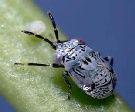 These bugs love to live in weedy areas and eat aphids, leafhoppers, Mexican bean beetles and insect eggs. They need meat to reproduce and will only occasionally consume plant juices. They have large “bug eyes” are oval in shape and usually gray to tan in color.
These bugs love to live in weedy areas and eat aphids, leafhoppers, Mexican bean beetles and insect eggs. They need meat to reproduce and will only occasionally consume plant juices. They have large “bug eyes” are oval in shape and usually gray to tan in color.
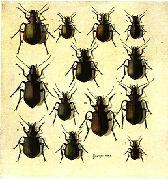
BEETLES
General Information:
There are about 3,000 species of beetles worldwide. Many are good and some are bad and sometimes it is difficult to tell the good guys from the bad guys.
Professional gardeners will tell you that if the beetle is slow moving kill it and if it is moving fast it is probably in pursuit of another bug. All beetles have a straight line running down its back where its wings join.
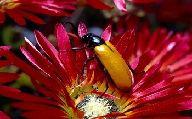
BLISTER BEETLE

General Information:
The only good thing about this beetle is that its larvae, consumes grasshopper eggs. If you touch this beetle it will give you a painful blister. Spanish fly is produced from this beetle.
CHECKERED BEETLE
General Information:
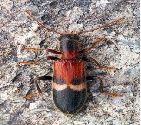 Bright-colored beetle: that is covered with a thick coat of short hairs. The larvae are usually yellow or red and have a horn. Most have a checkerboard pattern and prey on woodborers; however, their larvae will kill many pest larvae and the eggs.
Bright-colored beetle: that is covered with a thick coat of short hairs. The larvae are usually yellow or red and have a horn. Most have a checkerboard pattern and prey on woodborers; however, their larvae will kill many pest larvae and the eggs.

FIREFLY
General Information:
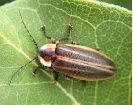 These beetles are also referred to as
These beetles are also referred to as
“lightning bugs”
and have a luminous area near the end of their abdomen. They use this light to signal for a mate so they will not be too happy when you catch them and interrupt their mating ritual. The larvae eat cutworms and many small insects. They love to eat snails and inject them with their digestive juices and then drink the liquefied tissue.